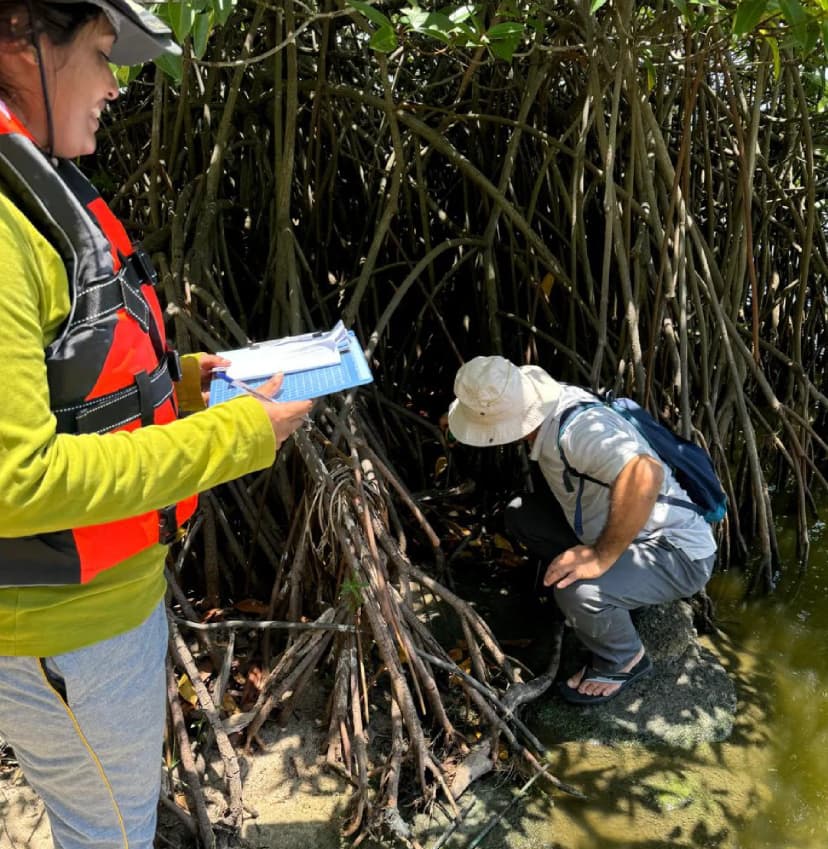Projects/Nature Based Solutions/Blue Carbon/Mangrove Afforestation, Reforestation and Conservation/Sri Lanka - Eastern Province Mangroves Project
Sri Lanka - Eastern Province Mangroves Project
Tidal forest Restoration and Conservation Project – Eastern Province of Sri LankaPermanenceMedium
40-100 yearsSri Lanka is home to 23 different true Mangrove species. The Trincomalee – Batticaloa patch, is the third-largest mangrove ecosystem in the country.
Our project protects and aids in the conservation of:
23 species of mangroves
10-15 species of mammals
6-8 species of reptiles
50+ species of birds
50+ species of fish
10+ species of crustaceans
8000 people are expected to have improved livelihoods or income generated as a result of project activities, out of which 1000 are women.
The Eastern Province of Sri Lanka boasts 50.84 sq.km. of "True mangrove forests". These unique and valuable ecosystems are crucial for biodiversity, coastal protection, and carbon sequestration. However, human activities like deforestation, land reclamation, and climate change have severely degraded these true mangrove forests. Urgent action is needed to protect and restore these vital ecosystems. This project is an opportunity to dedicate long-term efforts for restoration activities and enhance local community livelihoods in Sri Lanka’s East coast for the next 40 years.
This project's long-term efforts will focus on revitalizing these habitats, safeguarding biodiversity, strengthening coastal resilience, and empowering local communities through sustainable economic opportunities. This multifaceted approach aims to significantly improve the well-being and environmental resilience of the communities who depend on these precious coastal resources.
To achieve this, our strategy involves a science-backed approach to mangrove restoration, coupled with active engagement of local communities. By understanding the unique adaptations of mangroves and implementing effective replanting techniques, alongside fostering sustainable livelihoods and ensuring community ownership, we aim to create lasting positive change for both the environment and the people of Sri Lanka's East coast.

Mangrove forests stand out as exceptionally efficient carbon sinks, sequestering three to five times more carbon per hectare compared to terrestrial forests. Their dense structure and waterlogged, low-oxygen soils allow for carbon retention over centuries, highlighting their crucial role in climate change mitigation. The science underpinning our project involves understanding these unique adaptations, such as the specialized roots that enable mangroves to thrive in saline, waterlogged environments. Restoration efforts will focus on replanting native species like Rhizophora and Avicennia in carefully selected areas based on tidal patterns, soil salinity, and hydrology.
Beyond carbon sequestration, Eastern Province mangroves are vital for reducing coastal erosion and supporting biodiversity. Recognizing threats like overexploitation, our strategy combines practical restoration with initiatives that promote sustainable economic growth for local communities. This ensures they are key partners in conservation through alternative livelihoods and eco-friendly enterprises.
By implementing this comprehensive approach, our goal is to restore vital mangrove habitats, leading to increased biodiversity and coastal protection against natural disasters. Ultimately, these ecological improvements will positively impact the quality of life for the communities who call the Eastern Province home, fostering both environmental health and sustainable livelihoods.
Carbon sequestration capacity of mangrove, Sri Lanka. K.A.R.S. Perera, M.D. Amarasinghe
https://doi.org/10.1016/j.geoderma.2019.03.041
Atmospheric carbon removal capacity of a mangrove ecosystem, Sri Lanka.
https://doi.org/10.1016/j.atmosenv.2016.03.034
Carbon stocks in mangrove ecosystems of Sri Lanka.
https://doi.org/10.1016/j.ocecoaman.2024.107357
Mangrove floristic diversity and distribution of biomass carbon
DOI: 10.4038/cjs.v52i1.8108
Mangrove forest in Sri Lanaka
https://doi.org/10.1016/j.rsma.2023.102932
Sri Lankan Mangroves: Biodiversity, Livelihoods, and Conservation
10.1007/978-981-19-0519-3_13
Project Impact










